Did you know that turtles can make fun and interesting pets? Turtles are unique creatures that can bring joy and companionship to many children and adults alike. By diving into the world of pet turtles, you will learn about the different types of turtles commonly kept as pets, how to create a comfortable living environment for them, and understand their dietary needs. Moreover, this knowledge will help you ensure their health and well-being, understand their behavior, properly clean and maintain their habitat, and become aware of the legal and ethical considerations of turtle ownership. So, lace up your shoes and let’s embark on this exciting journey to explore the fascinating universe of turtles!
Types of Turtles as Pets
There are many types of turtles that make wonderful pets, each with unique qualities and characteristics. One type of turtle commonly kept as a pet is the red-eared slider. Red-eared sliders are known for their bright red ear markings and can grow up to 12 inches in length. They are highly adaptable to different environments, which is one of the reasons they are popular as pets. These turtles are aquatic and need a spacious tank with clean water, a basking area, and a heat lamp for their habitat.
Box turtles are another type of turtle that are often kept as pets. There are four subspecies of box turtles, with the most common in the pet trade being the eastern box turtle and the three-toed box turtle. Box turtles are terrestrial creatures, meaning they live on land. They require an outdoor pen or a large indoor enclosure with plenty of hiding spots, as well as a shallow water dish for soaking. Box turtles are omnivorous and enjoy a varied diet of fruits, vegetables, and insects.
Aquatic turtles are a diverse group of turtles that require an aquatic habitat, as their name suggests. Some popular types of aquatic turtles kept as pets include painted turtles, map turtles, and diamondback terrapins. These turtles require a large tank with a filtration system to maintain clean water, as well as a basking area with a heat lamp similar to red-eared sliders. Aquatic turtles are typically omnivorous, with their diet consisting of plants, insects, and small fish, depending on the species.
Softshell turtles are another option for pet owners who are seeking a more unique and specialized type of turtle. These turtles have a soft, flat shell and are highly aquatic, requiring a tank with deep water and a sandy substrate to rest in. Softshell turtles can be quite active and need ample space for swimming. Their diet consists mostly of live food, such as fish and crustaceans. It is important to note that softshell turtles can be somewhat aggressive and might not be the best choice for a household with young children.
Are you considering getting a pet turtle? One interesting option is the Russian tortoise, known for its friendly and outgoing personality. These land-dwelling tortoises only grow to about 8-10 inches in length, making them a unique choice for a pet. They enjoy burrowing and need a dry, spacious enclosure with substrates like hay, grass, or coco coir for digging. Their herbivorous diet consists of leafy greens, vegetables, and some fruits. Keep in mind that, when properly cared for, Russian tortoises can live for several decades, so they are a long-term commitment for pet owners.
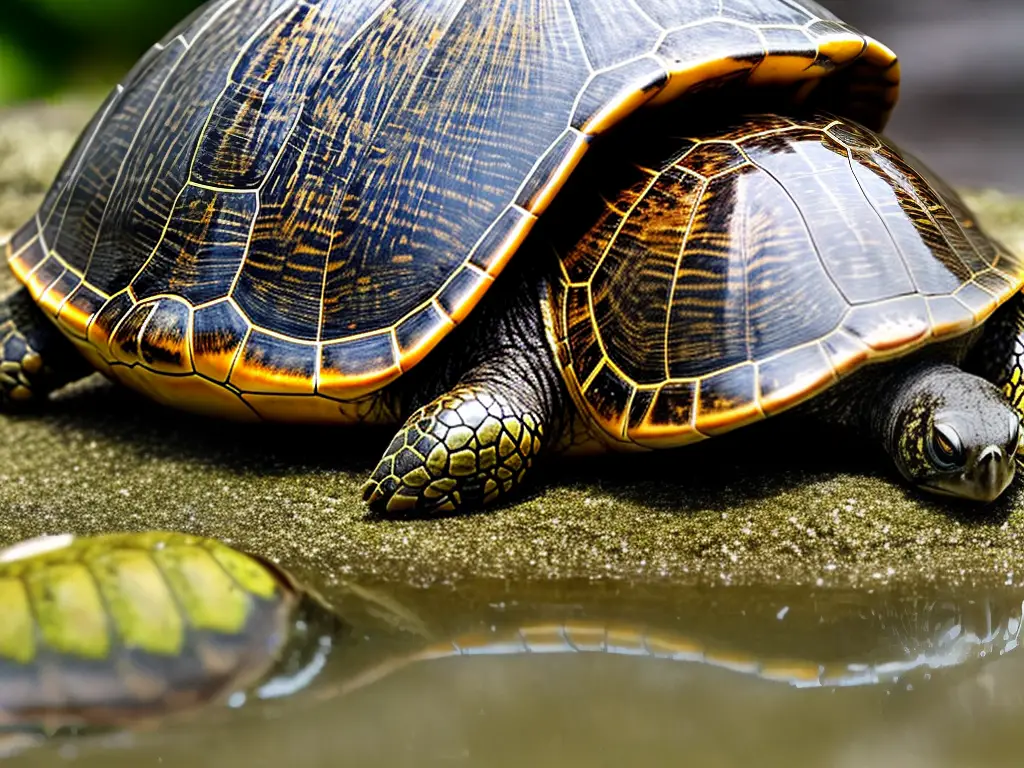
Proper Turtle Habitat Setup
Once you’ve decided to get a pet turtle, like the Russian tortoise, it’s crucial to set up a proper and comfortable habitat for them. Tank size is an essential factor to consider; they need ample space to swim, bask, and explore their environment. Depending on the species and size of your turtle, a tank between 30 to 120 gallons may be suitable. Remember that turtles grow, so you may need to upgrade to a larger tank over time. A good rule of thumb is to have 10 gallons of water capacity for every inch of the turtle’s shell length. Setting up the right habitat ensures your new pet will be happy and healthy.
Maintaining water quality is essential for a turtle’s health and well-being. Installing a reliable water filtration system in the turtle’s tank helps eliminate waste and harmful bacteria, ensuring clean and clear water for your pet. Choose a filter designed for turtle tanks or one specifically recommended for the turtle’s size and species. You should also perform regular water changes, typically every 1-2 weeks, and monitor parameters such as ammonia, nitrite, and nitrate levels to keep the water in the ideal condition.
Since turtles are cold-blooded animals, they rely on external sources to maintain their body temperature. A heating system is necessary to keep the water in the tank at the appropriate temperature, which varies depending on the species of your turtle. For most aquatic turtles, a water temperature of 75-80 degrees Fahrenheit is ideal, and you can achieve this by using a submersible aquarium heater. Along with water heating, provide a basking spot for your turtle where they can dry off and warm up. Place a heat lamp above this area to create a basking temperature of around 90-100 degrees Fahrenheit.
Lighting is another essential factor to consider when setting up a turtle habitat. Proper lighting helps turtles maintain healthy shell growth, aids in calcium absorption, and contributes to their overall well-being. A UVB light source is required, as this type of lighting provides ultraviolet wavelengths that turtles need to synthesize vitamin D3, which in turn helps them absorb calcium from their diet. Ensure that the UVB light is positioned within an appropriate distance from the basking spot, usually between 10-12 inches, and replace the bulb every 6-12 months, as its effectiveness decreases over time.
Lastly, providing hiding spots in a turtle’s tank is essential for their mental health and comfort. Turtles need places to hide and retreat to when they feel stressed or threatened. You can create hiding spots by strategically placing rocks, driftwood, and aquatic plants within the tank. Be sure that the hiding spots are secure and cannot fall or trap your turtle, which could potentially cause injury. By incorporating hiding spots in the habitat, your turtle will feel more at ease and display a natural behavior, leading to a healthier and happier pet.
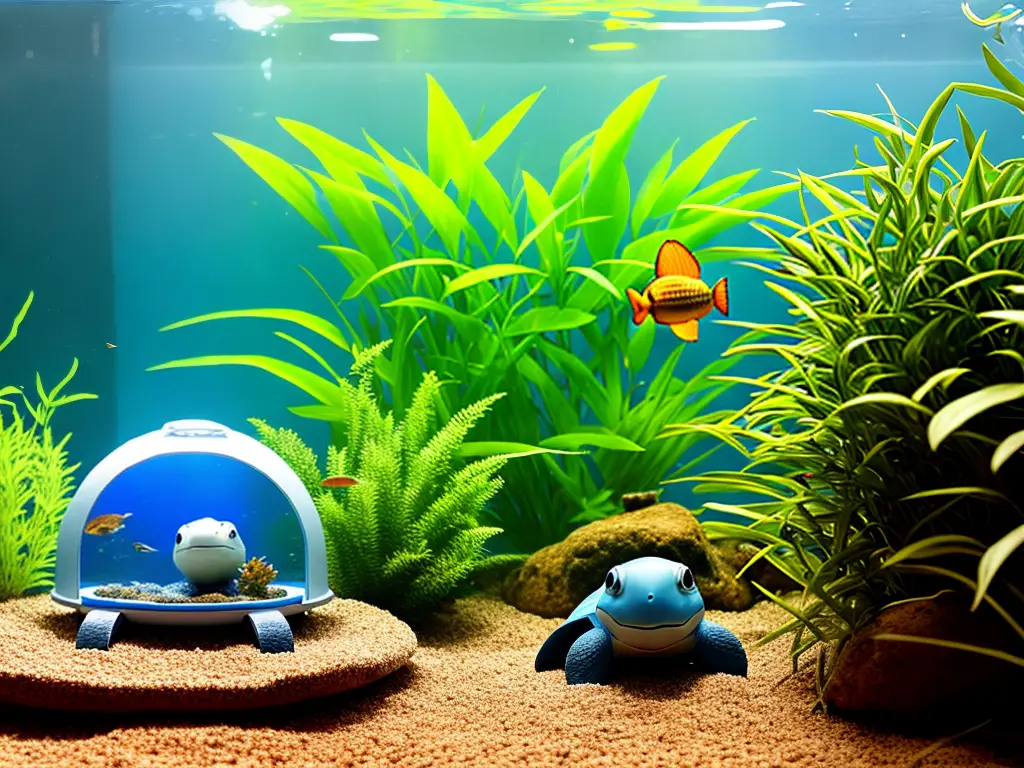
Turtle Dietary Needs
Another important aspect of keeping turtles as pets is ensuring they have a proper diet. Turtles have unique dietary needs depending on their specific species. Some turtles are herbivores, which means they primarily eat plant-based food, while others are omnivores, which means they eat both plants and meat. Before you start feeding your pet turtle, it’s important to know what type of turtle you have and what its specific dietary needs are. You can find this information by talking to your vet, a turtle expert, or by doing some research on your own. A balanced diet contributes to a healthy and happy turtle, and it complements the safe habitat and hiding spots you have provided for them.
For turtles that are herbivores, the majority of their diet should be made up of leafy greens, such as dandelion greens, collard greens, and romaine lettuce. They can also eat smaller amounts of other vegetables like carrots and bell peppers, as well as fruits like apples and strawberries. It’s essential to feed your turtle a variety of these fruits and vegetables to ensure they get all the necessary vitamins and minerals they need for proper growth and overall health.
On the other hand, if you have an omnivorous turtle, you’ll need to include some protein in their diet. This can include different types of insects, such as crickets and mealworms, as well as small fish like goldfish or guppies. You can also feed your turtle cooked lean meats like chicken, but these should be given in small amounts and only occasionally. Some turtles may also enjoy eating commercial turtle pellets, which are formulated to provide all the necessary nutrients your turtle needs. However, pellets should not be the sole part of their diet and should be supplemented with other types of food.
The frequency and amount of food you give your pet turtle will vary depending on their age, size, and activity level. As a general rule, young turtles should be fed every day, while adult turtles can be fed every other day or three times a week. The amount of food you give will depend on the size of your turtle. A helpful guideline to follow is to offer your turtle enough food to fit its head or an amount roughly the size of its shell. This should be a mix of all the different types of food your turtle needs, including fruits, vegetables, and proteins. Be sure to remove any uneaten food from the enclosure after an hour, to prevent it from rotting and attracting pests.
Another essential aspect of a turtle’s diet is calcium. Calcium is vital for proper shell growth and overall health. One way to provide your turtle with this essential nutrient is to add a calcium supplement to their food. Alternatively, you can provide a cuttlebone, which is a natural source of calcium as well as a means for turtles to maintain their beak. Place the cuttlebone in your turtle’s enclosure, and your pet can nibble on it as needed. Always provide your turtle with fresh water to drink and to help aid in digestion. A careful and varied diet is not only essential for calcium needs but also helps to prevent other health issues such as vitamin A deficiency.

Common Health Issues in Pet Turtles and How to Prevent Them
Vitamin A deficiency is a common health problem that can affect pet turtles, causing swollen eyes, difficulty in breathing, and a decrease in appetite. To prevent this issue and ensure your turtle’s well-being, make sure to provide your pet with a balanced diet that includes foods high in vitamin A. Examples of these foods are dark green leafy vegetables, carrots, and sweet potatoes. By offering your pet turtle a variety of healthy foods and the proper supplements, you can ensure that they will be happy and healthy for years to come.
Another common health issue among pet turtles is shell rot. Shell rot is an infection caused by bacteria or fungi that attack the turtle’s shell. If left untreated, it can lead to damage of the underlying bones and internal organs. To prevent shell rot, it’s important to keep your turtle’s environment clean and maintain proper water quality. Make sure to remove uneaten food, waste, and debris from your turtle’s habitat regularly. Additionally, monitor your pet turtle’s shell for any signs of discoloration, softening, or unusual smell, as these may indicate the beginning of an infection.
Pet turtles can also suffer from respiratory infections, which can be caused by poor living conditions or inadequate nutrition. Signs of respiratory infections in turtles include wheezing, coughing, excessive mucus, and difficulty breathing. To help prevent respiratory infections, ensure that your turtle’s habitat is well-ventilated and at the proper temperature for their species. Also, provide them with a healthy, varied diet to support their immune system.
Parasite infestations are another health concern for pet turtles. Internal parasites, such as worms, can cause weight loss, lethargy, and digestive problems. External parasites, like ticks or mites, can cause skin irritation, inflammation, and infection. To prevent parasite infestations, maintain good hygiene in your pet turtle’s habitat and check their skin and shell regularly for any signs of parasites. If you suspect your turtle has parasites, it’s important to consult with a veterinarian experienced in reptile care for appropriate treatment.
Metabolic bone disease (MBD) is a serious health issue that can affect pet turtles, and it’s important for children to learn how to prevent it. MBD is caused by an imbalance of calcium, phosphorus, and vitamin D in a turtle’s diet, and can lead to weak, deformed shells and bones. To prevent MBD, it’s crucial to provide your pet turtle with a balanced diet containing adequate amounts of calcium and vitamin D. Proper lighting is also important, as turtles require ultraviolet (UV) light to synthesize vitamin D and absorb calcium. Regular check-ups with a reptile veterinarian can help you monitor your turtle’s health and ensure that they receive proper care and treatment if any health issues arise.
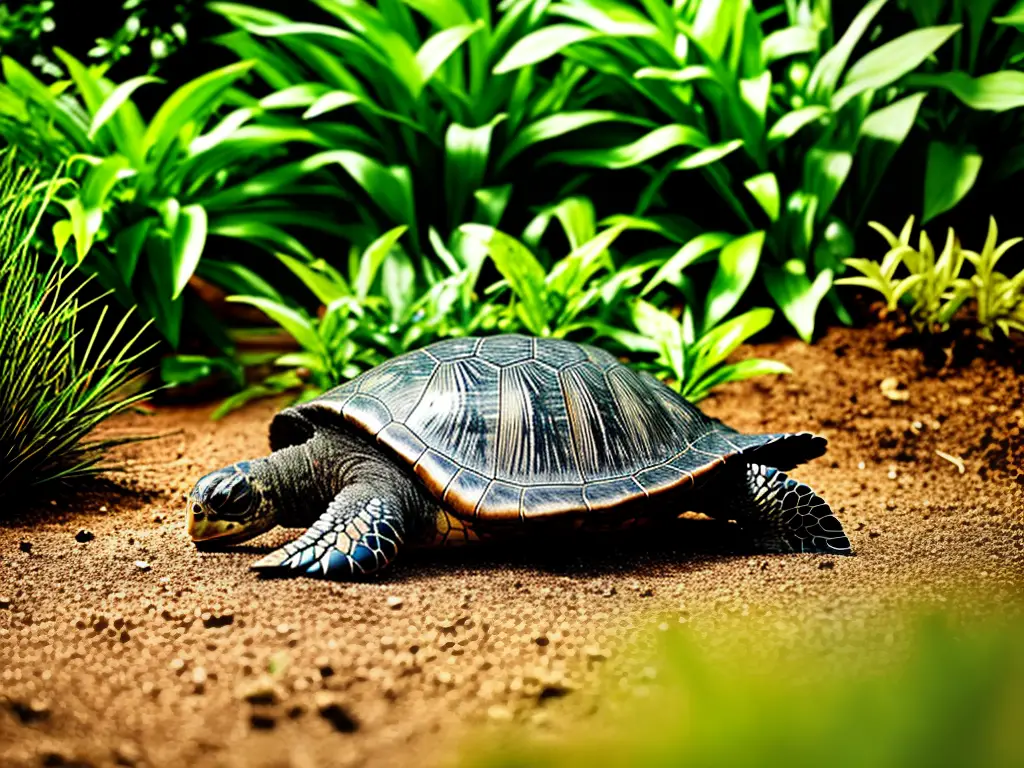
Tips for Safe and Respectful Interaction with Pet Turtles
In addition to maintaining your turtle’s health, it’s equally important for children to learn how to interact with turtles safely and respectfully. One thing to keep in mind when handling a pet turtle is that they may feel scared or threatened when being picked up. To safely pick up a turtle, approach from the side and gently lift the turtle from underneath, avoiding sudden or harsh movements. Be careful not to drop the turtle and allow it to feel secure in your hands. By following these guidelines, you can create a positive environment for your turtle and ensure their well-being.
Just like humans, turtles have their own unique personalities and behaviors. They may be more or less active depending on their mood, health, and environment. Observing your turtle’s habits can help you better understand their personality and how to care for them. For example, if your turtle enjoys basking under a heat lamp, you can ensure that they have plenty of time under a warm light every day.
Additionally, pet turtles can sometimes exhibit behaviors that signal they are unhappy or unwell. For example, a turtle that is hiding or remaining inactive for long periods of time may be sick or stressed. If you notice any unusual behaviors, it’s important to talk to an adult or a veterinarian who can help you determine if there is a problem and how to address it.
Turtles are generally gentle creatures, but they may become defensive if they feel threatened. Recognizing and understanding a turtle’s body language can help you avoid causing distress. For example, if a turtle retracts its head and limbs into its shell, it may be a sign that the turtle is scared or uncomfortable. In this scenario, it’s best to give the turtle some space and time to calm down before attempting to interact with it again.
Turtles, like all pets, depend on their owners to provide a safe and healthy environment to ensure they can thrive in their care. This includes paying attention to their behavior and body language, as well as providing clean water, proper food, and a comfortable habitat.

Cleaning and Maintaining Your Turtle’s Environment
One essential aspect of maintaining your turtle’s well-being is by regularly cleaning their environment. Turtles can produce a significant amount of waste, and a clean habitat can prevent the buildup of harmful bacteria and fungi, further ensuring the health and happiness of your pet turtle.
Regular cleaning includes removing uneaten food, waste, and debris from their habitat. It is essential to make a schedule for cleaning and maintaining your turtle’s home, as it helps to ensure that your pet stays healthy and happy.
One crucial aspect of cleaning a turtle’s environment is to manage the water quality. Aquatic turtles require clean water to live, and so investing in a good-quality water filter is essential. Filters help in eliminating harmful contaminants from the water and maintain proper water quality. It is also essential to change the water and clean the tank regularly, at least once a week or more depending on the size of the tank and the number of turtles.
Sanitizing your turtle’s habitat involves more than just cleaning the water. It is important to clean the tank thoroughly, including the walls, flooring, and any accessories. You can use a mild, reptile-safe disinfectant to clean your turtle’s home. Make sure to rinse the tank thoroughly with water and let it dry completely before adding any water and returning your pet to its habitat.
When it comes to maintaining your turtle’s environment, it is essential to keep an eye on the temperature, humidity, and lighting. Aquatic turtles need a heated basking area where they can regulate their body temperature. Ensure the required temperature for your specific turtle species is maintained using a heat lamp and a thermometer. Proper lighting is also important for turtle health. Reptiles, including turtles, need UVB light to synthesize vitamin D3, which is necessary for calcium absorption and healthy shell growth. Make sure you provide a UVB light for your turtle and replace it as per the manufacturer’s guidelines.
In addition to cleaning and sanitizing the turtle tank, make sure to observe your turtle’s behavior and overall health. Keeping an eye on your turtle can help you detect any potential health issues early on. If you notice any changes in your turtle’s behavior, appetite, or appearance, such as swelling, lethargy, or discoloration, consult your veterinarian.
Keeping a turtle as a pet can be a rewarding experience, but it requires creating a clean environment, ensuring proper lighting, and maintaining suitable temperature and humidity levels to keep your turtle healthy and happy.

Important Considerations for Keeping Turtles as Pets
Before bringing a turtle home, ensure you are aware of the legal requirements for turtle ownership in your area. Some species may be illegal or require special permits. Check with your local wildlife agency or a knowledgeable pet store for details. Additionally, be mindful of the environmental impact of pet turtles, such as the red-eared slider, which is an invasive species in some regions. Releasing pet turtles into the wild can harm native ecosystems, so it is important to commit to their lifelong care and avoid releasing them outdoors.
In terms of ethical considerations, the pet trade can often involve the mass capture of wild animals, which can have serious negative impacts on natural turtle populations. To ensure that you are supporting responsible and sustainable pet ownership, make sure to buy your turtle from a reputable source, such as a licensed breeder or a pet store that guarantees their animals were bred in captivity. It’s also a good idea to look for species that are not endangered or threatened to reduce the impact on global turtle populations. There are many species of turtles that are bred in captivity specifically for the pet trade, and these are generally better options as pets.
Captive breeding of turtles is not without its controversies, however, as taking animals from the wild can sometimes be necessary for preserving genetic diversity and ensuring the survival of a species. In these cases, breeders need to follow strict guidelines and regulations in order to minimize the impact on wild populations. As a potential turtle owner, you can do your part by thoroughly researching the breeders and sellers you choose to support and by being fully committed to properly caring for your pet throughout its life.
Another ethical concern when it comes to choosing turtles as pets is the potential for transmitting diseases to humans. Turtles can carry salmonella bacteria, which can cause serious illness in people if not handled appropriately. It is crucial to maintain proper hygiene and follow the recommended guidelines when handling turtles or cleaning their enclosures to prevent the risk of infection. Additionally, if turtles are cared for properly, the risk of disease is significantly lessened.
When considering getting a pet turtle, it’s essential to be aware of their long life spans, often living for 50 years or more, and the unique ethical considerations that come with it. Owning a turtle is a significant long-term responsibility, as they require proper care and attention throughout their lives. Before getting a turtle as a pet, make sure you’re prepared for this commitment and have backup plans in place should your circumstances change and you become unable to continue caring for your pet.
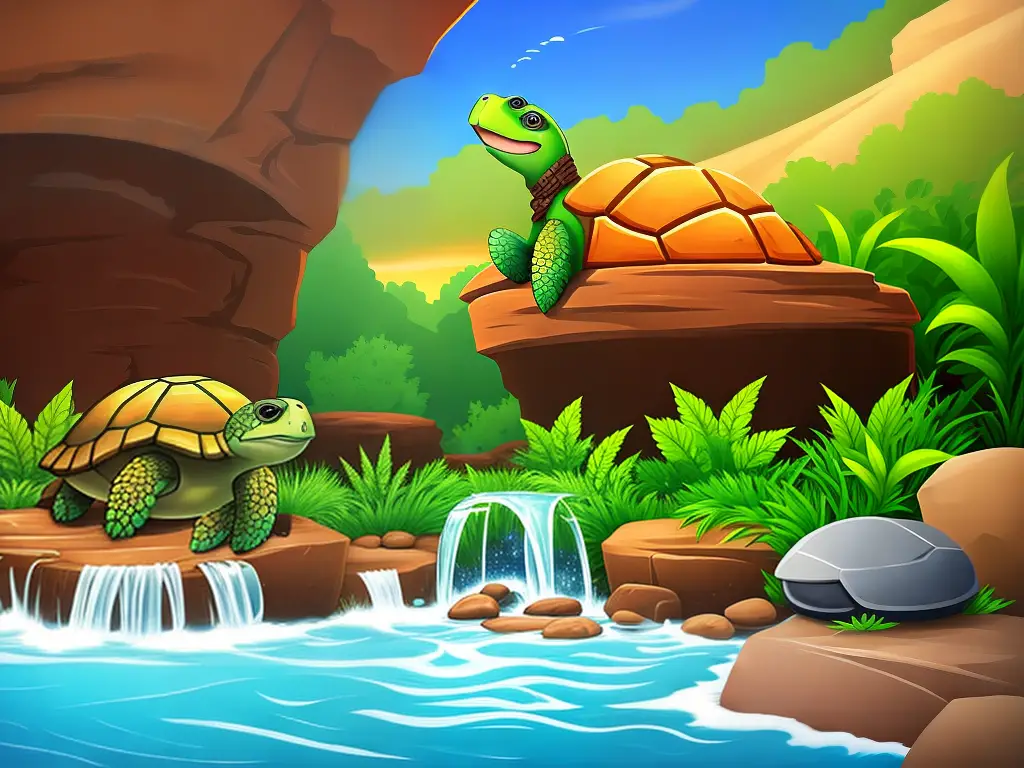
Resources and Support Networks for Turtle Owners
To ensure you are well-equipped in taking care of your pet turtle, there are numerous resources and support networks available for turtle owners. Online forums like TurtleForum.com and Austinsturtlepage.com provide a platform where you can ask questions, share experiences, and learn from fellow turtle enthusiasts. These forums cover a wide range of topics, including turtle care, health issues, and habitat setup. By engaging with these communities, you’ll have access to valuable knowledge and support from people who share your passion for turtles and are eager to assist beginners in their journey.
Social media platforms offer another way to connect with fellow turtle owners and experts. There are numerous Facebook groups dedicated to turtle care, such as “Turtle and Tortoise Owners” and “Pet Turtles, Tortoises and Terrapins”. These groups have thousands of members who discuss various aspects of turtle care and share updates on their pets. Besides Facebook, you can also find helpful resources on Instagram and YouTube, where many turtle enthusiasts share tips, advice, and interesting facts about turtle care.
Local pet stores can also be valuable sources of support and resources for turtle owners. These stores usually have knowledgeable staff who can provide guidance on turtle care, and they often sell the necessary supplies for looking after turtles, like tank setups, filters, and food. In addition, some pet stores host workshops and seminars on turtle care, so it’s worth checking their schedules for relevant events.
Veterinarians who specialize in exotic pets can be essential to maintaining the health of your turtle. They can provide expert advice on diet, habitat, and wellness, and can help diagnose and treat any health issues your turtle may face. To find a qualified veterinarian, you can ask for recommendations from fellow turtle owners or search for professionals online or through directories like the Association of Reptilian and Amphibian Veterinarians.
Joining in-person and online support groups is a great way to learn more about turtles as pets. Many cities have local reptile and turtle clubs that host meetings, workshops, expos, and other events. By participating in these groups, you can form friendships with other turtle enthusiasts, learn from their experiences, and even discover new resources or equipment that can benefit your pet. Some online platforms like Meetup.com can help you find turtle clubs and events in your area.
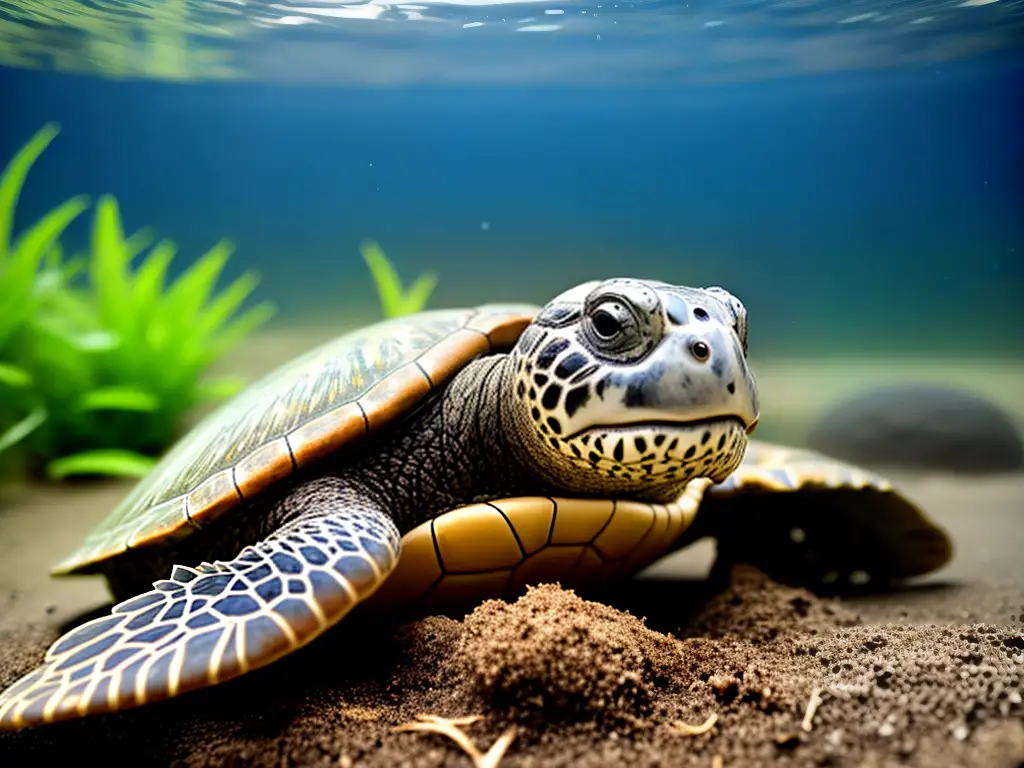
Turtle Facts and Fun Activities
At these clubs and meetups, you can learn fascinating facts about turtles and their incredible features that make them unique pets. For example, the shell of a turtle is actually part of its skeleton, consisting of two parts: the top part called the carapace and the bottom part called the plastron. These parts are connected by a bony bridge, and the turtle’s spinal cord and ribs are attached to the carapace. The shell is also covered in scutes, which are layers of keratin that protect the shell and give it its pattern. You might even learn about how some turtles can retract their head and legs into their shell for protection, a process known as turtling.
Another fun fact about turtles is their impressive lifespan. Different species of turtles can live for varying lengths of time. For example, small pet turtles like the red-eared slider can live for 20-30 years, while larger species like the Galapagos tortoise can live up to 100 years or more! As a pet owner, this means that you could have your turtle companion around for a very long time.
One great turtle-inspired activity involves learning about the various turtle species found around the world. There are over 350 known species of turtles, and they can be found on every continent except Antarctica. To explore different types of turtles, you can create a research project using books, the internet, or even visit a local pet store or zoo to observe them. This will not only be educational but will also help you choose a suitable species and environment for your pet turtle.
If you are looking for some engaging turtle-themed crafts to enjoy, there are plenty of options available. For instance, you can create a turtle shell using paper plates, colored paper, and glue. Alternatively, you can make turtle-shaped cookies or cupcakes by using a round cookie-cutter for the main shell and adding legs, tail, and a head with extra dough or icing. For turtle movie nights, there are numerous films featuring turtles like Teenage Mutant Ninja Turtles, A Turtle’s Tale, and Finding Nemo that can be enjoyed by the whole family.
Engaging in turtle-themed activities can enhance your appreciation for these unique creatures and provide tons of fun for the whole family. To further your understanding of turtles and their habitats, you can play educational games or use interactive resources online. Websites like National Geographic Kids or the World Wildlife Fund(WWF) have fun games, videos, and informative articles about turtles and their environments. These activities will not only improve your knowledge about turtles as pets but also our ecosystem and the importance of conservation efforts.

Turtle Care Tips
As you learn more about turtles and their habitats, you may find that they can make interesting and low-maintenance pets. There are many turtle species to choose from, including aquatic turtles and land turtles, each with their own specific care requirements. One of the most captivating features of turtles is their longevity, with some species living up to 20 years or more, making them a long-term commitment as pets. It’s essential to continue learning about their habitat, diet, and common health issues in order to provide the best care possible for your potential new pet.
When creating a suitable habitat for pet turtles, consider the turtle species’ specific needs. Aquatic turtles should have a combination of water for swimming and dry areas for basking. The water should be kept clean and filtered, and an adequate heat source is required for both the water and the basking area.
Land turtles, on the other hand, will need a habitat with appropriate substrate for digging, hiding spots, and proper lighting. Most turtles require UVB lighting for proper shell growth and overall health, so investing in a good quality UVB light is important.
A turtle’s diet is another essential factor to consider, as different species have varying requirements. Aquatic turtles typically enjoy a diet consisting of commercial turtle pellets, live prey such as crickets, worms, or feeder fish, and leafy green vegetables. Land turtles may have more of a plant-based diet, including leaves, flowers, fruits, and vegetables. It’s crucial to research the specific dietary needs of the turtle species you’re considering as a pet, to help support their growth and health.
In addition to general care, it’s important to be aware of common health issues that turtles may face. Respiratory infections, shell rot, and metabolic bone disease are among the most prevalent health issues experienced by pet turtles. Regular vet check-ups and properly maintaining the turtle’s habitat and diet will help prevent these issues. If you notice any unusual changes in your turtle’s appearance or behavior, consult a veterinarian who specializes in reptiles for a thorough examination.
While turtles may be enjoyable pets, they are also known for carrying salmonella bacteria in their gastrointestinal tracts. Handling turtles may expose you and family members to salmonella. This can be avoided by washing hands thoroughly with soap and water after handling turtles or their habitats. Young children, elderly individuals, and people with compromised immune systems may be at a higher risk for complications from salmonella and should be cautious in handling turtles or participating in their care.
Even with the basic knowledge of turtle care, there are still many questions you might have, such as the specific needs of the chosen turtle species, the ideal temperature for their habitat, and the compatibility of different turtle species in a shared habitat. It is crucial to do thorough research or consult with a reptile specialist before getting a turtle to ensure that you can provide the best possible care for your new pet. Keep in mind that turtles, like any other pet, require ongoing commitment and responsibility to ensure their well-being and happiness.
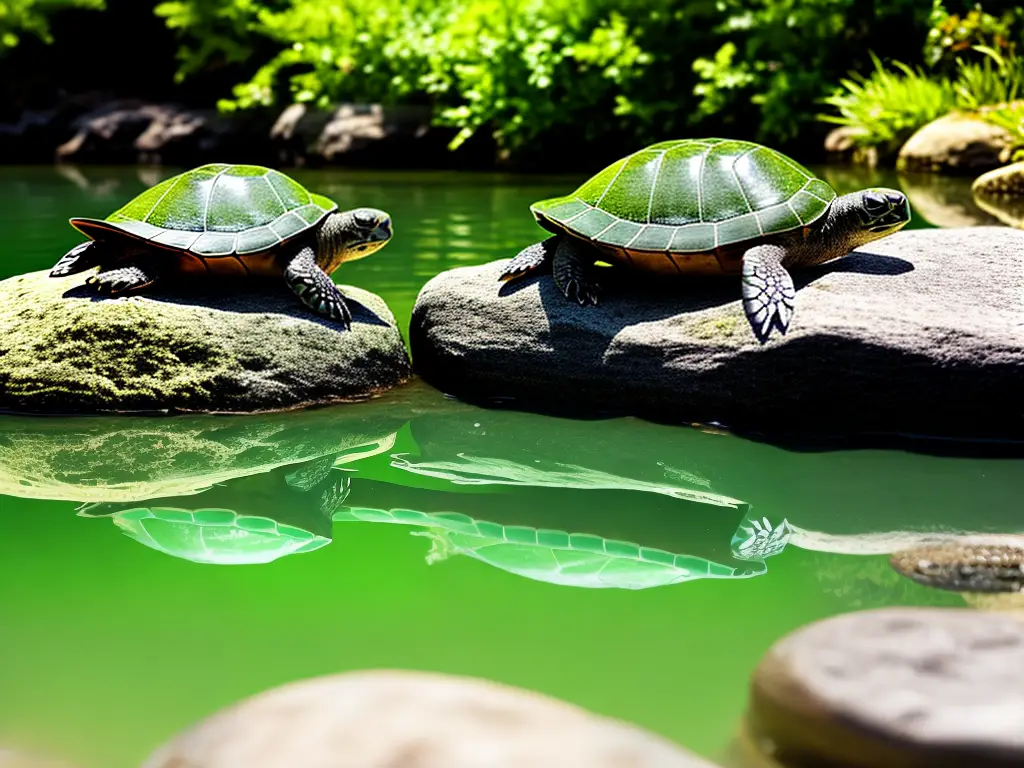
After exploring the captivating world of pet turtles, you are now equipped with basic knowledge about the types of turtles, their habitat setup, diet, health, behavior, and ethical considerations. Moreover, at your fingertips are numerous resources and support networks, as well as fun facts and turtle-inspired activities. As you continue to expand your understanding of turtles, remember that they are unique, fascinating creatures that require considerate care and attention. With the new information you’ve gained, you’ll be able to provide a happy and healthy life for your pet turtle!